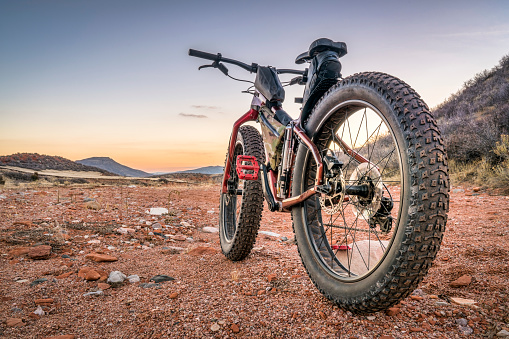In snowy or wet environments, or where riding a regular-tire mountain bike is futile, not fun, and might damage trails, a fat bike is a perfect tool to extend your riding season. The larger tires on fat bikes allow them to float over soft surfaces, which is ideal for bikepacking and riding on sand. Even on a frame without suspension, they smooth out the ride. Tires on fat bikes are getting wider for greater floatation in extreme conditions, and bikes are getting lighter for greater performance. As dropper posts become more common on stock builds, riding technical terrain and remounting in deep snow will become easier. In the market for a fat bike? While you’re shopping around, apartment from helmets here are some things you should keep in mind.
As you Explore the Market for a Fat Bike, Keep These Points in Mind
Here are some points-
Suspension
Fat bikes are most commonly hardtails with rigid forks. Even rigid bikes can feel like they have suspension when running low-pressure tires that are four- to five-inch wide, which conforms to irregularities in the trail. Consider buying fat tire bikes with full suspension if your riding surface is bumpy, uneven, or rocky, or if you want your tires to run at a higher pressure for less squirm. If you swap fat rims for standard mountain bike rims, a full-suspension setup will help you maneuver better, keep you comfortable after long rides, and make the ride more enjoyable. Rigid forks, on the other hand, maybe more reliable if you ride in extremely cold temperatures.
Wheel Size
The most common fat bike wheels are 26inches, but 27.5inches are not uncommon either. Having larger wheels makes pushing over or through obstacles on trails easier. There are many different widths of fat tire wheels, ranging from 60mm to 100mm. A wider tire requires a wider rim in general. The bike will feel lighter and livelier with a narrower rim.
Wheel Swapping
The rims of some fat bikes can accommodate fat tires as well as 27.5 or 29-inch mountain bike rims. You can have one bike with multiple personalities if you don’t want to ride fat tires all year long. It is recommended to run it with fat tires when it is snowing or sanding. You may find that the best mountain bikes wheels with narrower rims and smaller tires are a better choice for everyday use because they are lighter. In order to enjoy different options, you’ll have to purchase a second set of wheels if your fat bike uses a different hub standard.
Tires
A fatter tire provides a smoother ride. Tires with a diameter of five inches are more floatation on soft ground than tires with a diameter of four inches. The downside of fatter tires is that they are heavier, slower, and bouncy on firm ground. A narrower tire will provide a more satisfying ride on firmer, drier trails, and at higher speeds. If you choose tubeless, run low pressures and set them up tubeless for a lower flat rate. Ensure your tubeless sealant can withstand subzero temperatures. The best way to enhance your grip is to buy or make studded tires if you’ll be riding on icy terrain rather than snowy trails.
Tire Pressure
To fine-tune your fat bike’s performance, you need to know its tire pressure. If the conditions are soft, you may run two psi on five-inch-wide tires. The bike’s handling will be sharper when you use more pressure in firmer or rougher terrain, or at higher speeds. As you encounter different conditions on a single ride, you might need to change the tire pressure several times. It is important to invest in a good digital tire pressure gauge if you want to enjoy fat-biking at its best because even a half-pound difference in pressure can make a significant difference.
You can also read- Virtual Bookkeepers Are Not Virtual Accountants

